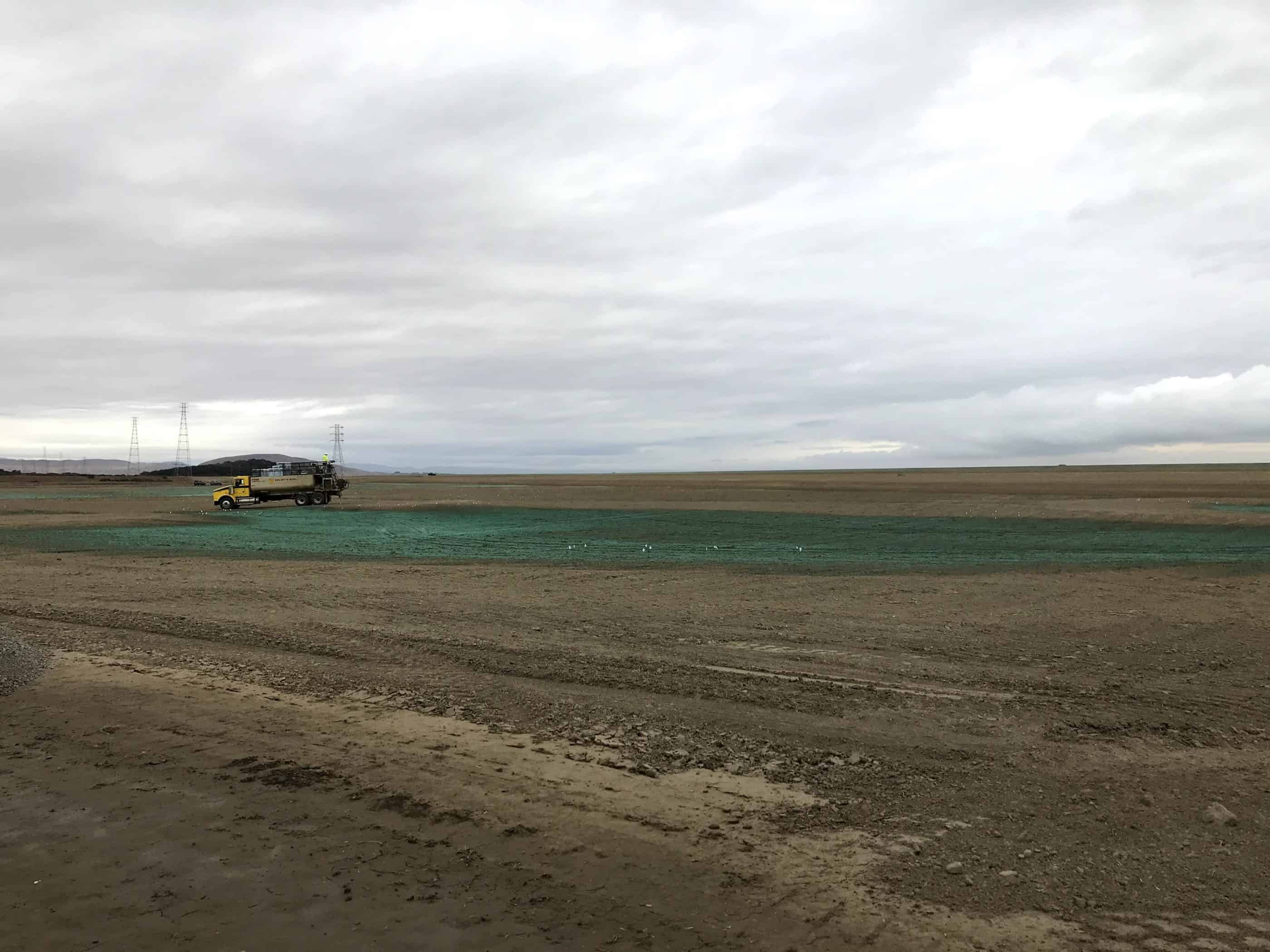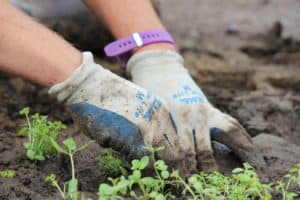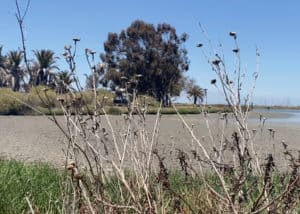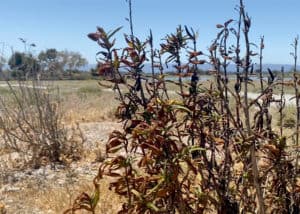In the middle of the 2012-2016 drought, Save The Bay worked to restore a transition-zone levee in the Eden Landing Preserve managed by the California Department of Fish and Wildlife. This was the first time that we experimented with utilizing a seed mix as a restoration technique. A hydroseed contractor covered the 4.25-acre site with a carefully selected mix of competitive native species, but due to inconsistent rain patterns that winter, the seed mix largely failed.

For some, this experience might have served as a grim harbinger of climate change in our state, as California’s dry period grows longer and its wet season more concentrated with increased atmospheric rivers bringing precipitation into our region. In a field of expertise in which nature holds the reins, this experience was certainly demoralizing to our Habitat Restoration Team, but also served as an opportunity to adapt and strategize as we move forward in an uncertain climate. 
Habitat restoration is a seasonal endeavor at Save The Bay. Our team’s work operates on an annual cycle that largely centers around outplanting native plants into restoration sites. This process occurs during the cool, wet winter months. As a non-profit, we rely not on expensive irrigation systems, but on rainfall, to support our native plants in developing healthy and deep root systems that will sustain them once they leave the sheltered nursery environment. Taking advantage of seasonal fluctuations is how we capitalize on our plants’ natural dormancy and growth patterns and ensure maximum survivorship. Many of the native species that we grow at our nurseries are reasonably adapted to survive California’s harsh Mediterranean summers.
The changing climate has altered the timeline and methods with which we do our work. Plant survivorship is one of many concerns when meeting our habitat restoration and outreach goals. In the example of seed mix revegetation, we now plan to broadcast the seed prior to the annual influx of precipitation. Doing so increases the likelihood of loss from animals or wind, but ensures that the newly germinated seedlings have the longest window of time possible to develop root systems and complete their lifecycle. Reduced air quality due to extreme fire events exasperated by drought conditions limits our staff’s ability to conduct crucial outreach, bringing students and members of the public to our shoreline sites.


Looking toward the future, we hope for rain and remain nimble, shifting our work to promote the most positive outcomes. Each plant we successfully establish at our restoration sites contributes to the larger regional goals of providing habitat, filtering pollutants, and providing shoreline protection.

















































